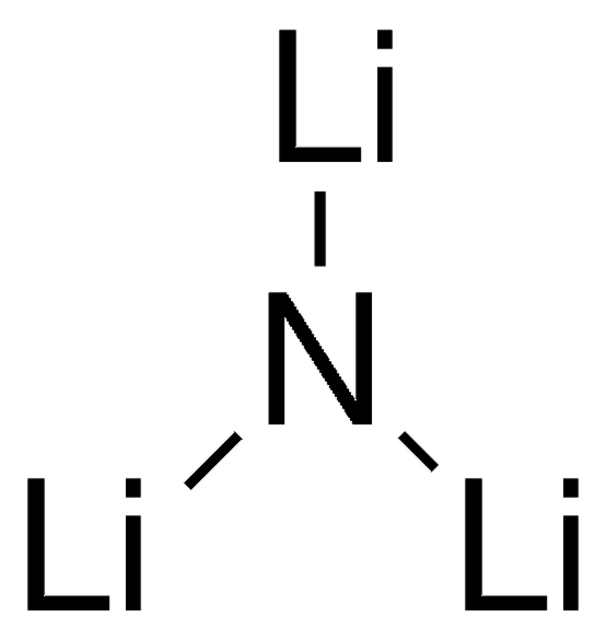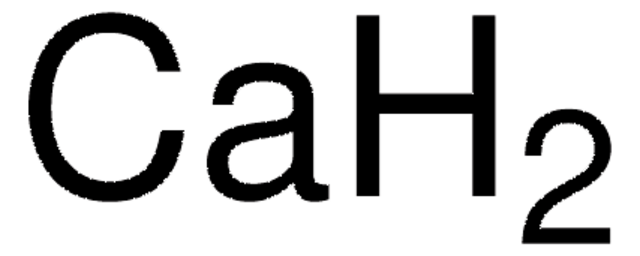Kluczowe dokumenty
201049
Lithium hydride
powder, −30 mesh, ≥95%
Synonim(y):
LiH
About This Item
Polecane produkty
Poziom jakości
Próba
≥95%
Formularz
powder
przydatność reakcji
reagent type: reductant
charakterystyka ekologicznej alternatywy
Design for Energy Efficiency
Learn more about the Principles of Green Chemistry.
sustainability
Greener Alternative Product
wielkość cząstki
−30 mesh
mp
680 °C (lit.)
gęstość
0.82 g/mL at 25 °C (lit.)
kategoria ekologicznej alternatywy
ciąg SMILES
[Li]
InChI
1S/Li.H
Klucz InChI
SIAPCJWMELPYOE-UHFFFAOYSA-N
Szukasz podobnych produktów? Odwiedź Przewodnik dotyczący porównywania produktów
Opis ogólny
Zastosowanie
Hasło ostrzegawcze
Danger
Zwroty wskazujące rodzaj zagrożenia
Zwroty wskazujące środki ostrożności
Klasyfikacja zagrożeń
Acute Tox. 3 Oral - Skin Corr. 1B - Water-react 1
Zagrożenia dodatkowe
Kod klasy składowania
4.3 - Hazardous materials which set free flammable gases upon contact with water
Klasa zagrożenia wodnego (WGK)
WGK 1
Temperatura zapłonu (°F)
Not applicable
Temperatura zapłonu (°C)
Not applicable
Środki ochrony indywidualnej
Eyeshields, Faceshields, Gloves, type P3 (EN 143) respirator cartridges
Wybierz jedną z najnowszych wersji:
Masz już ten produkt?
Dokumenty związane z niedawno zakupionymi produktami zostały zamieszczone w Bibliotece dokumentów.
Klienci oglądali również te produkty
Produkty
Our research impacts on the hydrogen energy economy through the development of “smart” nanofilms for the protection of metal hydrides against air and moisture, while permitting release of hydrogen gas through these semi permeable nanofilms.
Mechanochemical Effect of Severe Plastic Deformations: Metal Alloys, Hydrides and Molecular Solids
Global Trade Item Number
| SKU | GTIN |
|---|---|
| 201049-10KG | |
| 201049-5G | 4061838764133 |
| 201049-100G | 4061838764102 |
| 201049-10G | 4061838764119 |
| 201049-500G | 4061838764126 |
Nasz zespół naukowców ma doświadczenie we wszystkich obszarach badań, w tym w naukach przyrodniczych, materiałoznawstwie, syntezie chemicznej, chromatografii, analityce i wielu innych dziedzinach.
Skontaktuj się z zespołem ds. pomocy technicznej










